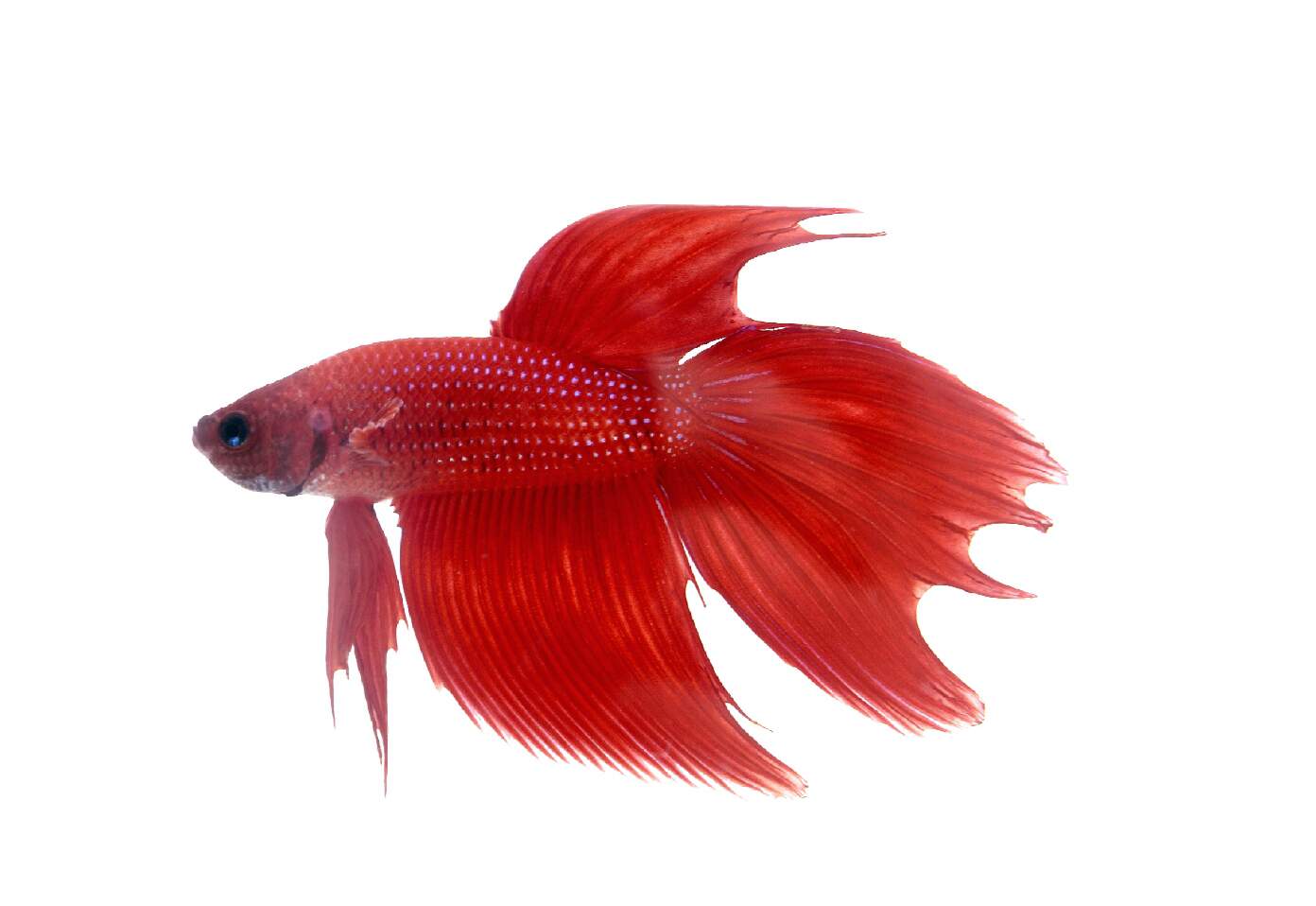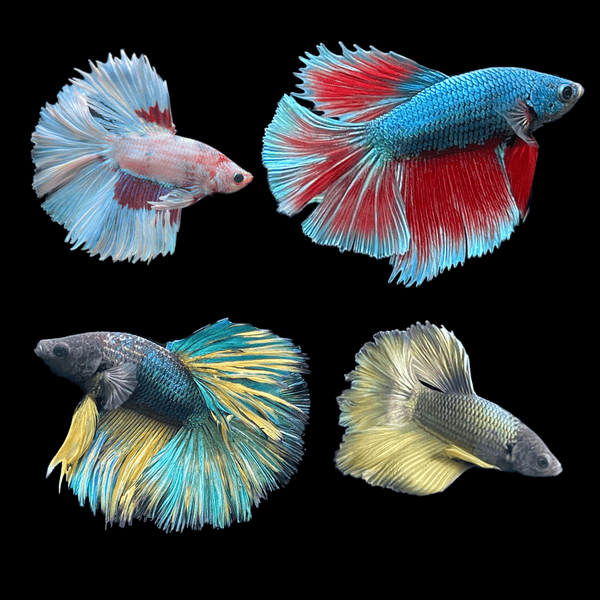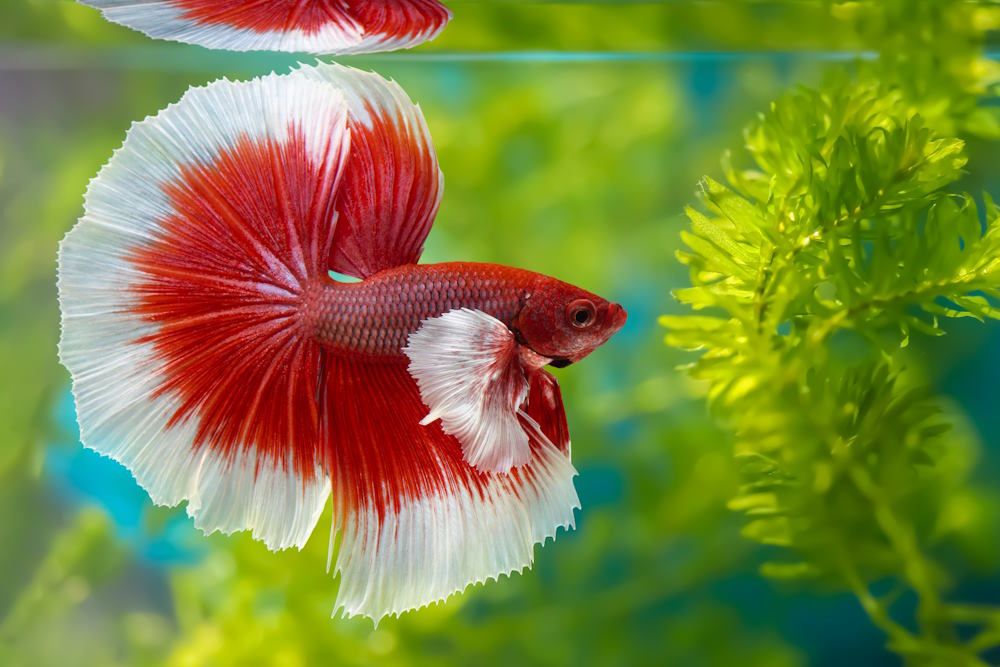Betta Fish Lifespan: Exactly How to Guarantee Your Betta Lives Longer
Betta Fish Lifespan: Exactly How to Guarantee Your Betta Lives Longer
Blog Article
Breeding Betta Fish: a Comprehensive Step-By-Step Guide to Successfully Raising Child Bettas From Eggs to Their Adult Years
Breeding Betta fish is a precise venture that requires cautious planning and implementation to make certain the effective advancement of fry from eggs to mature fish. Choosing genetically varied reproduction sets with desirable features is just the beginning; producing an optimum environment and comprehending the intricacies of the reproducing process are just as vital. As the male Betta carefully constructs a bubble nest and guards the valuable eggs, the succeeding stages of treatment and change demand attention to information and expertise of best techniques. How does one browse the challenging yet satisfying path of supporting these vivid animals to their adult years?

Choosing Reproduction Pairs
When starting the journey of breeding Betta fish, selecting the appropriate breeding sets is essential to achieving preferable qualities and a healthy lineage - betta fish. The primary step in this process is to recognize the particular qualities you wish to improve or preserve, such as color, fin type, and physique. It is important to pick genetically varied pairs to prevent inbreeding, which can result in wellness concerns and undesirable attributes
Evaluate possible reproducing prospects thoroughly. A healthy and balanced male Betta ought to display vivid shades, an active temperament, and well-formed fins, while the lady needs to also present lively coloration and a rounded belly, showing preparedness for spawning. Observing the character of both fish is essential, as hostile or overly shy individuals might not reproduce effectively.
Maintaining records of the moms and dad fish's ancestry can help you track hereditary qualities and potential problems. Eventually, spending time in the choice process will considerably enhance the likelihood of producing strong, vibrant children that satisfy your breeding objectives.

Preparing the Breeding Tank
Creating an optimal reproduction atmosphere is an essential step after choosing ideal sets for Betta fish. The breeding storage tank ought to be especially created to provide comfort and boost the natural breeding behaviors of the fish. Beginning with a storage tank dimension of at the very least 10 gallons to make sure sufficient room for both the man and women Bettas.
Keep a gentle filtration system to maintain the water clean while staying clear of solid currents that can stress the fish. In addition, an air rock can be included in provide oxygenation without interrupting the water surface excessive.
Temperature guideline is essential; go for a stable variety of 78-82 ° F(25-28 ° C) using a dependable heating unit. The pH degree need to be preserved between 6.5 and 7.5, and regular water modifications are essential to ensure high water high quality.
Incorporate floating plants or generating sponges to develop hiding places for the female, while also urging bubble nest building by the male - betta fish. Finally, ensure the tank is free from sharp designs and any kind of prospective hazards, as the well-being of the fish should always be prioritized throughout this vital stage of reproduction.
The Breeding Process
Commonly, the reproducing process for Betta fish entails a series of unique and observable actions that indicate readiness for reproduction. The male Betta begins by developing a bubble nest at the water's surface, which acts as a site for the fertilized eggs. This nest is essential, as it provides a risk-free setting for the eggs up until they hatch out.
When the nest is established, the male will certainly show courtship habits, such as flaring his fins and displaying vibrant shades to attract the female. The female, upon visit our website picking up the man's readiness, will respond by showing upright stripes along her body, indicating her receptiveness.
When the female methods, the male participates in a breeding dancing, often causing an embrace called the "spawning." During this welcome, the woman releases her eggs, which the male fertilizes promptly. The fed eggs after that drop to the bubble nest, where the male very carefully accumulates and returns them to the nest. Following this, the male thinks duty for guarding the nest and guaranteeing the safety of the eggs till they hatch, typically within 24-36 hours. This stage is vital in the breeding process, laying the structure for effective fry advancement.
Taking Care Of Betta Fry
Caring for Betta fry needs cautious attention to their setting and nutrition to make certain healthy development and advancement. After hatching, Betta fry are extremely tiny and susceptible, requiring a stable and tidy environment.
Feeding Betta fry is just as vital. Feed them tiny quantities numerous times a day, being mindful not to overfeed, which can lead to water top quality concerns.
Transitioning to Adult Bettas
As Betta fry mature, transitioning them to adult Bettas is a vital stage that needs find out here cautious monitoring of their environment and social interactions. This procedure normally begins when the fry get to around six weeks of age, whereupon they can be progressively introduced to an extra organized living atmosphere.
To promote this change, it is vital to make certain that the water specifications-- such as temperature level, pH, and ammonia levels-- are optimal and steady. Grown-up Betta fish grow in cozy water (around 78-80 ° F) with a pH of 6.5 to 7.5. Slowly acclimate the fry to these conditions to decrease anxiety.
Social communications are an additional crucial variable; male Bettas are infamously territorial and aggressive. It is recommended to separate males right into private containers as they mature. Female Bettas can be housed with each other, but treatment ought to be required to keep track of for indicators useful reference of aggression.
Additionally, nutritional modifications should be made as the fry grow. Include top quality pellets and live foods to support their growth and health. By managing these variables efficiently, you can promote a successful transition to their adult years for your Betta fish.

Conclusion
Successful breeding of Betta fish needs cautious interest to information throughout the entire procedure, from picking genetically diverse sets to supplying optimal treatment for fry. By making sure appropriate reproduction conditions and maintaining water top quality, the possibility of healthy and balanced children raises substantially. In addition, a balanced diet regimen and steady adjustment to grown-up environments are important for the development and advancement of Betta fish. Adhering to these steps vigilantly fosters a thriving populace of Betta fish, boosting both their wellness and vigor.
Report this page